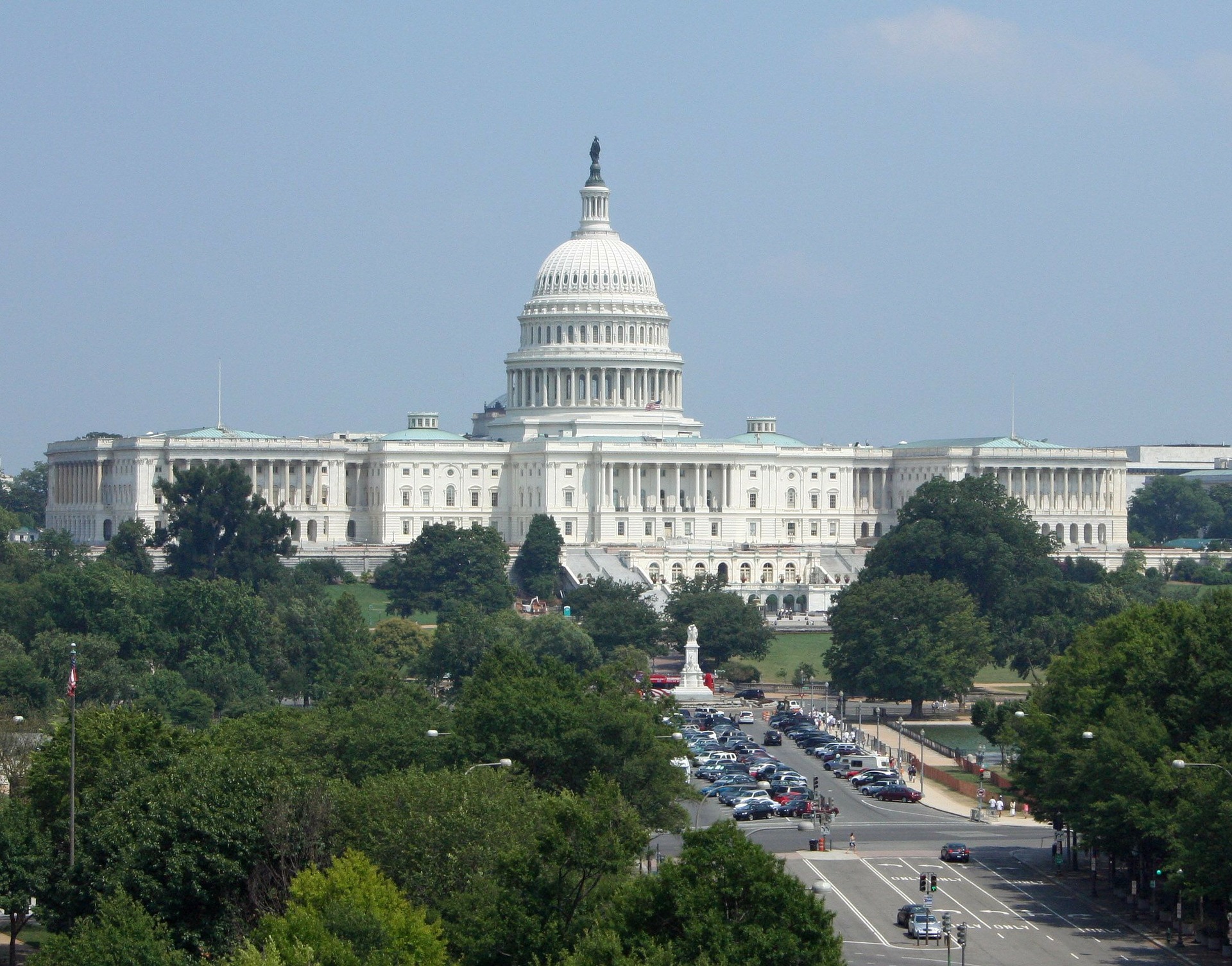
FOR IMMEDIATE RELEASE
August 10, 2020
The Monday Morning Quarterback
A quick analysis of important economic data released over the last week
The big news last week occurred late Friday. President Trump, in an attempt to break what is one of the most outrageous and thoroughly disappointing political deadlocks I have ever seen, signed four Executive Orders in an attempt to break open the deadlock. The inability of the Democrats and Republicans to continue the financial rescue of the those who lost their jobs through no fault of their own and continue the help to those unemployed due to COVID-19 is so outrageous because it almost guarantees that many of those affected will not be able to come out of the current situation in any semblance of normality in financial terms. They have been thrown under the bus after the CARES Act ran out on August 1st by politicians who clearly care more about the gains of their party than what happens to Americans and the economy. The Executive Orders are an attempt to provide some short-term funding to those unemployed and force negotiations to continue so the deadlock ends. They are by no means a perfect or permanent solution. But, as we have discussed many times since COVID-19 started to be a major factor in all of our lives, unless those who are being deprived of a source of income due to current events get money for food and rent, etc., there is no way we can have any semblance of a normal economy at the other end of this. The damage now being done is completely unnecessary. What was in the Executive Orders?
- It provides unemployment aid of $400 per week in addition to a state’s normal unemployment benefits. $300 will be provided by the federal government and $100 will be provided by each state. This is down from $600 in the CARES Act but deals with the biggest perverse incentive in that act. It paid many people more to stay home than they would make going back to work. The result was that many who were asked to go back to work declined. The effect was quite negative. The Order calls for $44 billion to be spent on this at the federal level. This will only last for one or two months. But, that’s plenty of time to come up with a more complete deal between the parties. Some states will respond that they can’t afford it. That’s an issue for the fuller negotiation. Also, it does not provide necessary funding for small businesses. More and more of these businesses will not be able to reopen with every day that passes. There could be legal challenges to the spending that is usually a congressional issue. But, will a party really want to stop the flow of money to unemployed Americans? It’s not perfect, but it buys some time.
- It provides for a payroll tax holiday from September 1st through December 31st for workers who earn less than $4,000 every two weeks. This will create incentives to go back to work ASAP and will help those employed as well. The President wants this to be permanent. Again, it’s not perfect.
- It creates an ability to have a federal evictions moratorium. While the wording gives Federal agencies the ability to “consider” the moratorium, political pressure from those affected will be so intense it is likely to occur fast. While some groups are saying 30,000,000 to 40,000,000 face eviction, a more realistic number seems to be between 7,000,000 and 12,000,000. This is still a huge number and deserves immediate attention. This is especially true for those in apartments who can’t simply add the unpaid rent on to the end of a mortgage. Assistance to those renters who were genuinely affected and did not just decide not to pay or spent their CARES money on items other than rent will be necessary from both states and the federal government. Landlords also need relief from these moratoriums.
- Student loan payments deferred until December 31st. All interest on student loans held by the federal government will be waived through the end of the year. This will relieve a financial burden on millions of Americans. But, many who will get relief are also still employed and this seems to be included as an attempt at fairness. Not my first choice but again it’s a start.
This is being written on Sunday. By the time you read this on Monday, hopefully more has been accomplished for those who need immediate relief. But, it forces the hands of those who would rather push their political agenda. With some luck, this will bring both parties back to reality. Some things are “NOW” issues. Some things are not. Again, help to those who are not working due to no fault of their own and previously viable businesses that will soon be relegated to history without aid cannot wait until all the issues between the parties attempt to be resolved (it didn’t work for Nero and it won’t work for America). Time will tell. As for last week’s economic data, the big news was employment growth was modestly above the consensus. The big problem is that the easy gains are just about over and with the reclosure of part of the economy over the past few weeks, next month looks likely to be slow. The unemployment rate dropped, even adjusting for misclassifications. Manufacturers’ new orders were up for the month in June but were down from a year ago. Both ISM’s manufacturing and non-manufacturing indices were up and indicate expansion. Credit usage in June was about flat as was construction spending. Mortgage applications fell the last week in July while mortgage rates continued to decline to their lowest rates in history. In Arizona, initial claims for unemployment insurance rose modestly. And in Greater Phoenix, the number of active listing in the MLS continued to decline to very low levels while resales continued to rise. As for the weekly data, TSA airport travelers inched up to 4.8 million. That’s down 73.9% from a year ago. Seat diners in Arizona were down 57.1% from a year ago. In Greater Phoenix, they were down 67.2% from a year ago. Nationally, they were down 58.4% from a year ago. U. S hotel occupancy was 48.9% last week. That’s down 36.9% from last year. Both Mobility Indices were flat with the previous week but were down from a year ago. The Mobility index to work was down 35.1% for the state and 37.3% for Maricopa county. Nationally, it was down 30.9% from a year ago. Mobility to retail and recreation places was down 23.7% in the state, 25.9% in Maricopa county and 15.3% nationally from a year ago.
U.S. Snapshot:
- Payroll employment increased by 1,763,000 in July. This was slightly above expectations. The gains were in the usual suspects given where jobs were lost earlier in the year. Leisure and Hospitality and Retail accounted for most of the gains reflecting the reopening throughout the country. The July numbers caused a sigh of relief since many parts of the country had throttled back in recent weeks. But, given the continued mix of some areas of the country reopening and some areas of the country reclosing parts of the economy as well as end of federal support (at least for the moment) in terms of PPP and unemployment insurance payments, August could also have people holding their breath. During the past three months, payroll employment has increased by 9.3 million. This still leaves payrolls down about 13 million from the February peak. Hidden in the employment report is the fact that less-skilled jobs in leisure and Hospitality and retail have been returning. But, jobs for more skilled workers in business and professional services are making little headway. This shows that the ripple effects of the original layoffs have spread.
- Initial claims for unemployment insurance continue at a high level. While last week’s number of 1,186,000 was well below the previous week’s level of 1,435,000, it was still 454% above a year ago. Since mid-March, 55,321,000 people filed an initial claim. That represents 36.6% of those employed in mid-March.
- The manufacturing recovery continued in June as factory orders increased 6.2% over May. On a year over year basis, new orders are down 10.6%. Yet, the rapid and widespread of COVID-19 in July has dampened the economic outlook. This is true despite the very good showing of the ISM’s manufacturing index. The index increased to 54.2 in July. That’s up from 52.6 in June. The index is now higher than year earlier levels of 51.3. Any reading above 50 suggests an expansion of the manufacturing sector. The ISM’s non-manufacturing sector is also signaling growth. That index was 58.1 in July. That’s up from 57.1 in June and 54.8 a year ago. Both are good signs for an economy that is in shock.
- Consumer credit in June increased by a modest 2.6% at an annual rate. Consumer credit is now 0.9% over a year ago. It is still well below its February high. Revolving credit posted another decline. It was a modest one. Nonrevolving credit, which involves larger, one-time purchases such as autos, homes and education is likely to continue to grow modestly.
- Auto sales rebounded in July to 14.5 million units. That’s up from 13.1 million units at an annual rate in June but down from 17.0 million units at an annual rate a year ago.
- The rate on 30-year fixed rate mortgages declined to 2.88% for the week of August 20th. That’s down from 2.99% the week of July 30th.
Arizona Snapshot:
- Initial claims for unemployment insurance fell to 16,351 the week of August 1st. This is the lowest number of initial claims in the state since March. The number is still 318.4% about year earlier numbers. As of that week, 840,039 Arizonans had filed an initial claim since mid-March. That’s 28.2% of the mid-March employment level.
- According to the Cromford Report, there were 14,189 active listing on the Greater Phoenix MLS in July. This compares to 16,377 in June and 19,535 a year ago. This has occurred at a time when resales increased from 10,544 in July compared to 9,340 a year ago. Average days on market has declined to 52.7 in July, 2020 from 60.7 a year ago.
- According to the Home Builders Association of Central Arizona, single family building permits in July were up a whopping 25.7% above s year ago. There were 2,799 single family units permitted this July compared to 2,227 units a year ago.
About EDPCo
Elliott D. Pollack & Company (EDPCo) offers a broad range of economic and real estate consulting services backed by one of the most comprehensive databases found in the nation. This information makes it possible for the firm to conduct economic forecasting, develop economic impact studies and prepare demographic analyses and forecasts. Econometric modeling and economic development analysis and planning are also part of our capabilities. EDPCo staff includes professionals with backgrounds in economics, urban planning, financial analysis, real estate development and government. These professionals serve a broad client base of both public and private sector entities that range from school districts and utility companies to law firms and real estate developers.
For more information, contact –
Elliott D. Pollack & Company
5111 N. Scottsdale Rd, Suite 202, Scottsdale, AZ 85250
480-423-9200 Website | Twitter | Facebook












